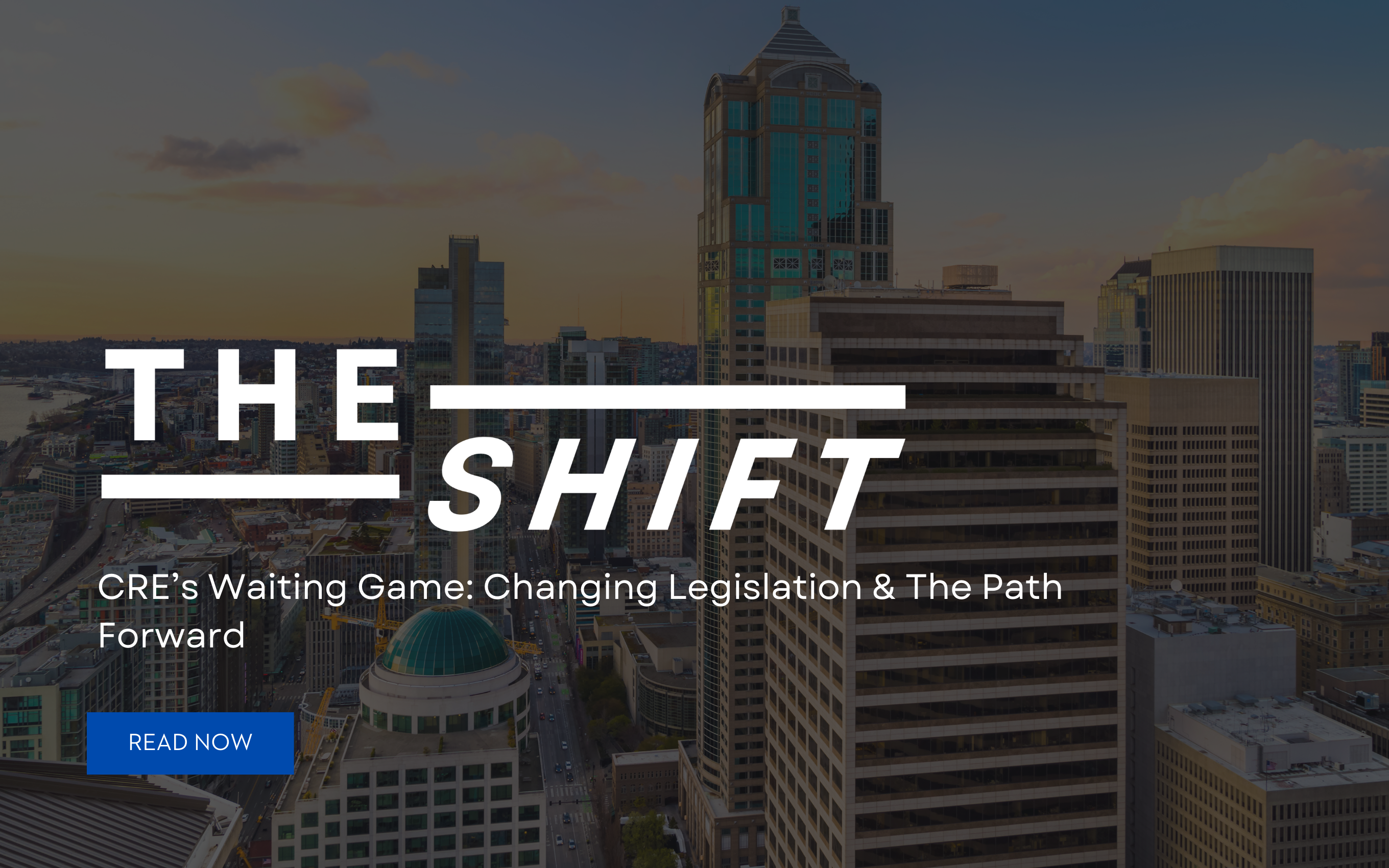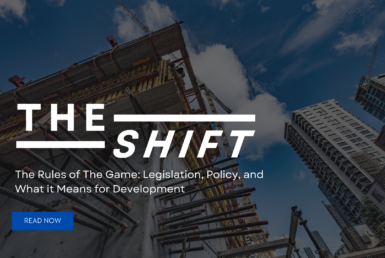THE SHIFT | CRE’s Waiting Game: Changing Legislation & The Path Forward

CRE’s Waiting Game: Changing Legislation & The Path Forward
In today’s environment, “playing the game” has become increasingly difficult. While a typical cycle may range anywhere from 8 to 12 years, the rise and fall of demand is typically fairly gradual. But, what we experienced in 2020, and the years following, was anything but gradual. Once the work-from-home order was declared, demand for new space ended abruptly. Consequently, the supply of sublease inventory grew like wildfire, competing with direct vacancies and causing lease rates to plummet almost overnight.
Here, years later, the dust appears to be settling at a market-wide vacancy rate (both direct vacancies and sublease inventory) of approximately 30%, creating a large void to backfill before expansion can occur again. Not only are we seeing a slow growth in office demand, but we are also experiencing a freeze in the development pipeline due to obstacles stemming from current legislation (explored in our previous article). These obstacles are amplified by macroeconomic factors in our current environment hindering developers’ ability to break ground on new projects.
In this article, we’ll dive deeper into the impact of current legislation and how it affects project financing, feasibility, and the ability to move forward as an industry. We’ll also take a look at new legislation aiming to drive new development both locally and nationally.
Why is Nobody Playing? The Impact of Legislation
Without legislation that reflects the current environment, developers find themselves “sliding back to start” and unable to start new projects to respond to community needs like housing shortages, affordability, and the “flight to quality” in the office market. As the needs and habits of our community change, legislation must too. This is not a cure-all for the current cycle, but it does provide developers a greater ability to get projects off the ground, and thus unfreeze the development pipeline.
This is because legislation heavily impacts project financing and owner operations. Looking to development specifically, in order to fund a new project or conversion, lenders and investors need assurance that all applicable laws have been followed before extending financing. But more importantly, they must see that developers have met the “soft rules” and shown their ability to reach certain financial metrics. Unfortunately, this is where most projects get stuck today. Due to macroeconomic factors and current legislation (impacting development fees and applicable taxes), the cost of these projects is too high and as a result, developers are unable to secure funding; thus keeping us stuck in the “waiting game”.
On the ownership side, legislation impacts the ability to operate and upgrade existing buildings. This is because to make any change to an existing building, owners must adapt to all new and changing regulations like energy requirements and building codes. Often, these adaptations require redesigning parts of the building or implementing new systems that require a significant amount of capital investment. Typically, this is built into a building’s operating expenses, but with a major shift in the market and rising vacancies, the ability to upgrade buildings to meet tenant needs and new requirements is limited; thus keeping the existing buildings stuck in the status quo.
With developers stuck getting projects off the ground and owners struggling to fund building improvements, it leaves everyone asking…
How Do We Get “The Game” Started Again?
With developers stuck getting projects off the ground and owners struggling to fund building improvements, it leaves everyone asking: How do we get “the game” started again?
While we can’t control outlying factors like inflation and interest rates, we do know that for any progress to be made, collaboration is key. In order to support and respond to the needs of our communities, government leaders must work with owners, developers, and the community to identify solutions that benefit all “players”.
As legislation and policy begins to reflect our current environment, so will our buildings. Soon, owners and developers may have the ability to climb back to the road (avoiding the chutes) and will once again be taking steps forward; benefiting and reflecting the needs of their communities.
Signs of Progress, both Locally and Nationally
Thankfully, this progress has already started. Most recently, Seattle City Council passed incentives for office-to-residential conversions allowing developers to utilize vacant office space to help alleviate the housing shortage and affordability crisis. A great step in the right direction, these efforts signal that the “waiting game” might be nearing its end.
At a state level, Washington passed Senate Bill 6175 this spring. This bill (effective as of June 6th, 2024) implemented a sales and use tax deferral program for the conversion of commercial buildings into affordable housing, further supporting the push towards more adaptive use of existing spaces.
On a Federal level, an Adaptive Reuse Bill was recently introduced to the U.S. House of Representatives. This bill aims to promote building conversion and adaptive reuse projects across the nation by providing tax credits to developers, encouraging the repurposing of underutilized spaces into much-needed housing and other community-serving purposes. If passed, this legislation could serve as a significant catalyst for revitalizing not just individual properties but entire neighborhoods, offering a path forward in addressing both economic and social challenges.
Combined with local initiatives like Seattle’s, these efforts could help turn the tide, transforming obstacles into opportunities and allowing the real estate market to regain its footing. Together, these initiatives reflect a growing recognition of the need for adaptive solutions in the face of evolving market conditions, paving the way for a more resilient and responsive real estate landscape.


